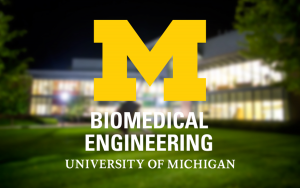Presented By: Biomedical Engineering
“Squish and Squeeze - Nuclear mechanics in physiology and disease”
BME Seminar Series: Jan Lammerding Cornell University

The nucleus is the characteristic feature of eukaryotic cells and houses the genomic information of the cell. The Lammerding laboratory is combining cell and molecular biology approaches with tissue engineering and microfabrication techniques, live-cell microscopy, and in vivo models to investigate the interplay between nuclear structure, mechanics, and function. In particular, the research is addressing how physical forces acting on the nucleus, for example, in contracting muscle cells or during migration of cells through tight interstitial spaces, can challenge the integrity of the nucleus, alter its structure, and cause genomic and transcriptional changes. These processes play important roles in cellular mechanotransduction, i.e., the ability of cells to convert mechanical stimuli into biochemical signals, but can also contribute to various diseases when the nuclear structure is perturbed by mutations or altered protein expression. For example, mutations in the nuclear envelope proteins lamin A/C are responsible for a broad spectrum of diseases (laminopathies), including Emery-Dreifuss muscular dystrophy (EDMD) and dilated cardiomyopathy. The fact that most mutations result in highly tissue-specific disease phenotypes primarily affecting skeletal and cardiac muscles, in spite of the near ubiquitous expression of lamins A/C, suggest that lamin mutations may render cells more sensitive to mechanical stress, which then causes progressive cell failure in mechanically stressed tissues. I will discuss our recent findings that highlight the importance of lamins A/C in mediating nuclear stability and mechanotransduction in mechanically stressed cells and tissues. At the same time, increased nuclear deformability, caused for example by reduced levels of lamins A/C, can promote cell migration through tight spaces with cross-sections smaller than the nuclear diameter, where the large size and rigidity of the nucleus can constitute a rate-limiting factor. I will present recent findings that demonstrate the importance of nuclear mechanics during cell migration in confined environments in vitro and in vivo, as well as the functional consequences of cells having to squeeze their large nuclei through tight interstitial spaces and small pores in the extracellular matrix network, with a particular focus on breast cancer.
Jan Lammerding, Ph.D., is an Associate Professor in the Meinig School of Biomedical Engineering and the Weill Institute for Cell and Molecular Biology & Director of Graduate Studies at Cornell University.
Jan Lammerding, Ph.D., is an Associate Professor in the Meinig School of Biomedical Engineering and the Weill Institute for Cell and Molecular Biology & Director of Graduate Studies at Cornell University.
Explore Similar Events
-
Loading Similar Events...
